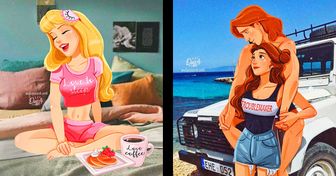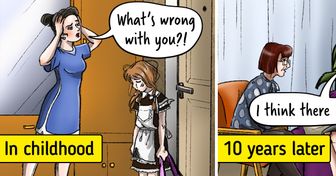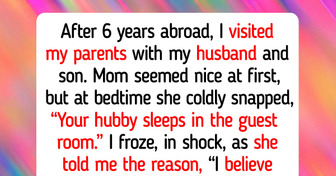20 Hilarious Photoshop Fails From Beginner to Expert

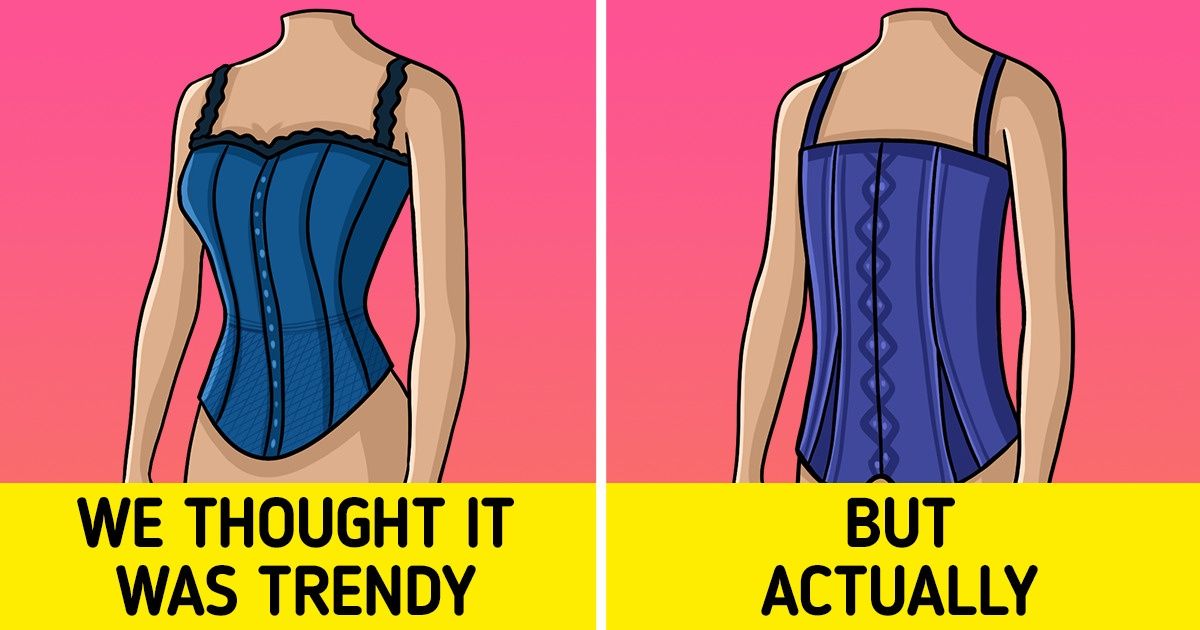
No matter how wild fashion is, it has a tendency to resurface at some point. For example, the blue dress that Charlize Theron wore in Snow White & the Huntsman was covered in bug wings. And it wasn’t some crazy idea from the designers, but a recreation of a fashion trend from the beginning of the 19th century.
Bright Side decided to try and prepare our readers for whatever surprises the future of fashion has in store for us by showing how crazy some of the trends of the past were.
Alexandra of Denmark, the wife of the Prince of Wales was a Victorian fashion icon. Her outfits were copied by a lot of ladies. The choker she used to hide the scar on her neck was worn by many other women. And when she had rheumatism in 1867 that made her walk with a limp, all of the other trendy women started walking around London with canes without any objective reason. Limping became so trendy that some manufacturers even started selling shoes with heels in different heights to make it easier to walk with a limp.
From 1908 to 1914, trendy women started wearing narrow skirts. It’s believed that Edith Ogilby Berg inspired the designer to create this skirt. Berg was the first American woman to fly as a passenger on an airplane and to keep her skirt from flying, she tied it around her ankles with a rope.
This dress was quite dangerous, it was hard to run, walk, and even sit when wearing it because it was easy to fall. Some women even tied their knees with a rope to avoid tearing the fabric.
People were already buying toilet paper, paper towels, and napkins. Was there a way to make them spend even more money on paper they don’t need? Yep! Just make a fashion trend with paper clothing! This was probably what Scott Paper Company thought when, in 1966, they started making paper dresses that cost $1.25.
Other manufacturers followed them and started making paper clothes for kids, wedding dresses, and even raincoats and bikinis that could be used only 2 or 3 times. At the top of the trend, in the 1960s, Mars Hosiery made 100,000 dresses a week. Even though these clothes weren’t very durable, they could protect you from light rain.
In the middle of the 18th century, Benjamin Franklin invented the lightning rod. And by the end of the century, ladies and gentlemen started wearing hats and umbrellas with portable lightning rods. Women’s hats had a metal ribbon with a silver chain attached to them. These chains would hang behind the women’s backs, touching the ground. After the lightning hit, the electricity was supposed to go into the ground protecting the hat owner.
Men had umbrellas with long sticks that had chains that hung on the ground. It is interesting that lightning rods on buildings weren’t used until the next century.
In Ancient Rome, women had very complex hairstyles because they were a symbol of wealth and position: only rich women could spend this much time on their hair. Natural locks were for barbarians. Slave barbers took care of their masters’ hair. They used pigeon droppings to lighten the color. And rotten leeches were used to dye their hair dark. If they wanted to prevent having silver hair, they made masks using herbs and worms. The first silver hairs were simply removed.
And instead of hairspray, they used needles to style their hair.
It wasn’t just women who had to suffer in the name of fashion. In the 18th and 19th centuries, some gentlemen were so obsessed with their appearances that they spent lots of money on their clothes. Dandy men wore collars made of hard plastic and they wore corsets to look slimmer. And their narrow pants were so tight that it affected their blood circulation and made their face and neck swell, and their eyes get puffy.
One of the 18th-century dandies described his clothes this way, “They were made to fit me much tighter than my skin. It was impossible to get into them without the help of a tailor.” It took 30 minutes to put the pants on and it was really hard to move in them.
One of the most famous dandies, George Brummell, spent up to 10 hours getting dressed and had to visit 3 barbers: one for his temples, another one for the back of his head, and a third for the curls on his forehead.
From the 1930s to the 1950s, among the Germans and the Dutch, it was trendy to have so-called duel scars. These scars meant that men were good candidates to marry. The thing was that men got these scars by participating in academic fencing that could only be afforded by privileged people. Even though these scars weren’t dangerous for their health, they were signs of the owners’ bravery. Some men even tried to make fake scars in order to look even more impressive.
While Brummell wanted to look elegant and avoid unnecessary attention, his predecessors were not that shy in their self-expression: in the 18th century, many men had powdered wigs that were made of human hair, and horse and sheep wool, dressed in satin, silk, and batiste, and wore makeup.
They whitened their skin, had rouge on their cheeks and lips, and darkened their eyebrows to have more contrast. Men also used masks for freckles and creams, they had perfumes for their mouth, and they used other beauty products.
In the 1920s, there were a lot of women in the West that behaved differently from the ordinary social norms. They were called flappers. These women were brave enough to invite men out, wear messy clothes, have their coats unbuttoned, and wear short hair. And instead of corsets, they had bras that made their breasts appear flat.
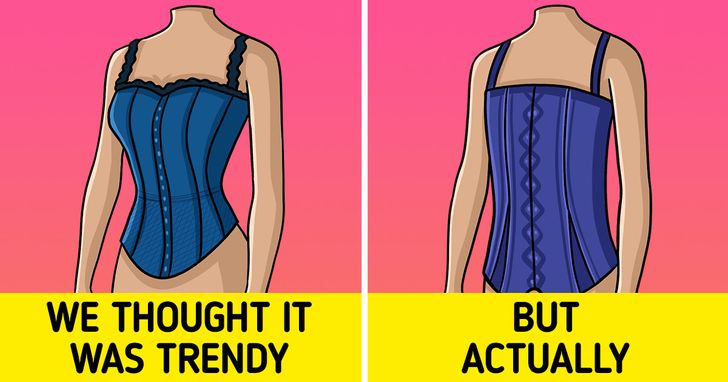
Flappers also wore corsets that flattened their figure, giving a straight up and down look, as opposed to the older corsets that accentuated the waist and bust. So flat breasts became attractive for a while.
In the 19th century, in Europe, people put beetle wings on expensive fabrics that were exported from India. With these wings and threads of silver, entire pictures were made that looked great in candlelight. Creating these clothes was incredibly hard: one dress could take over 3,000 wings.
In 2009, young designer Holly Russel got inspired by this fashion and made a blue chiffon dress with jeweled beetle wings for Lady Gaga. It took her 2 weeks to make.
What fashion trends of the past would you like to see today? Do you follow fashion trends or have you had the same style for many years?

